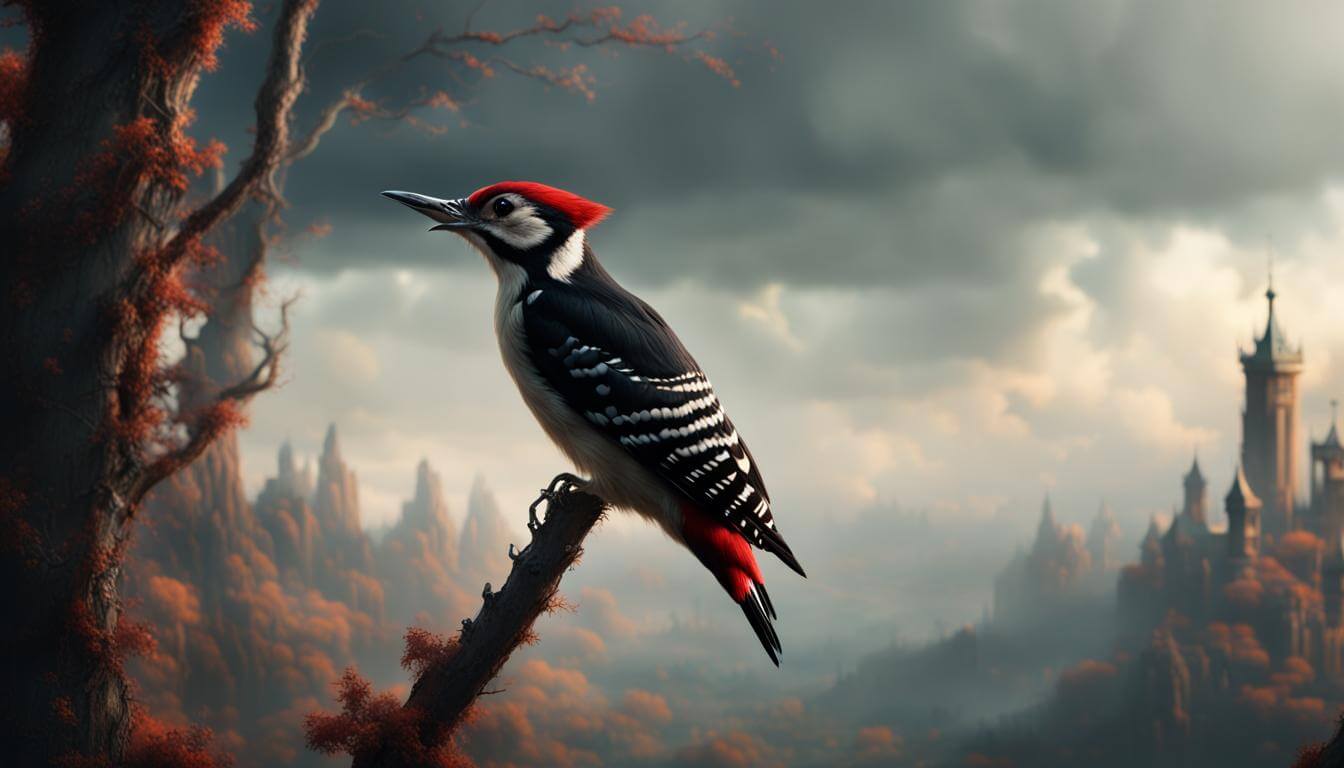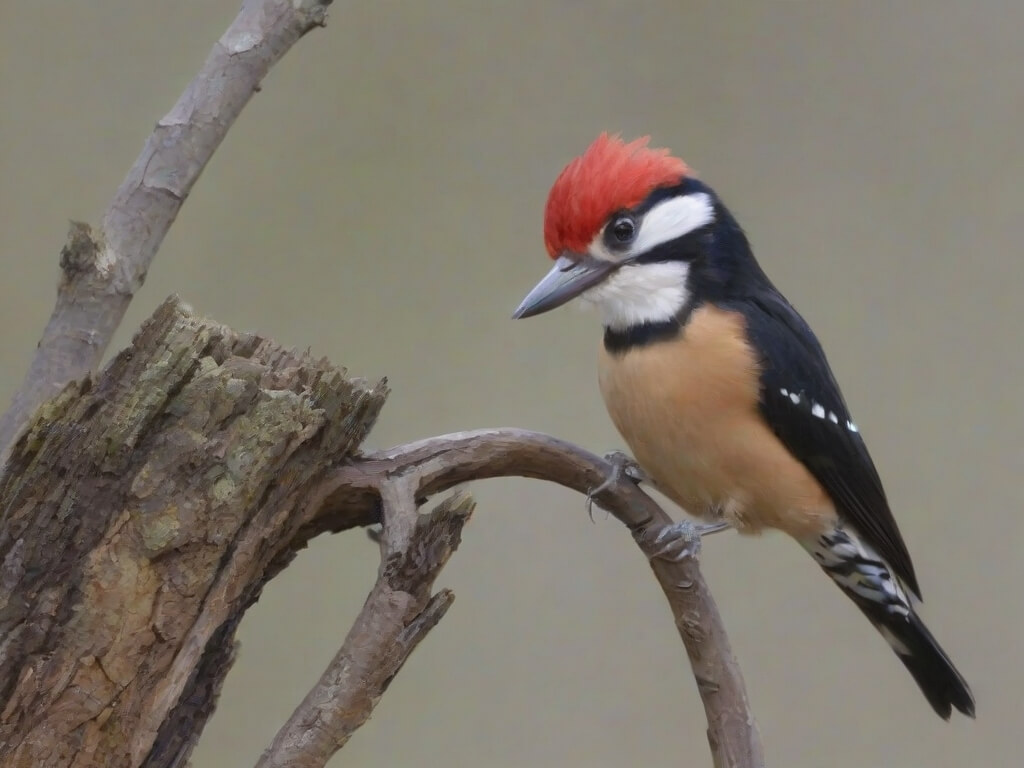Explore the world of woodpeckers, including their unique habits, distinctive features, diverse habitats, and various types. Learn about true woodpeckers, wrynecks, and piculets, as well as well-known genera like Dendrocopos and Colaptes. Delve into the intriguing behaviors of these birds, from their powerful bills for excavating nests to their specialized tongues for hunting insects.

Woodpecker; a bird of the subfamily Picinae which is widely distributed in the forested regions of the world but lacking in Australia, Madagascar, and most of the islands of the Pacific Ocean. This subfamily consists of about 180 species and, together with its relatives the wrynecks (subfamily Jynginae) and piculets (subfamily Picumninae), constitutes the family Picidae.
Wrynecks and Piculets:
The wrynecks and piculets are considered to be more primitive because they are less specialized for a life in the trees than the true woodpeckers. They differ from the latter in many respects, the most conspicuous being that the feathers of their tails are soft, their bills are much weaker, and, with one exception, they do not excavate their own nesting cavities. The wrynecks consist of only two species, one in Eurasia and the other in Africa, and are about six inches in size with a brown plumage speckled with white. Their curious name comes from their habit of contorting their necks at odd angles.
The piculets are very small, varying from only three inches in size, or a little less, to about five. Most species are dull green, spotted with black in some cases. They inhabit subtropical or tropical regions and are best represented in the Americas, where there are 25 species ranging from the Antilles and Honduras south to northern Argentina; 3 species are Asiatic, and 1 is west African. They appear to be a very ancient bird group.
True Woodpeckers:
The true woodpeckers (Picinae) are well characterized by their anatomy and mode of life. The texture’ of the tail is harsh, its feathers being stiffened by wirelike shafts. The bill is straight and very powerful; it is usually long and is always flattened laterally at the tip in the form of a chisel. The birds excavate their own nesting cavities by chiseling into a limb or the trunk of a tree, although one curious species, the ground woodpecker (Geocolaptes oli-vaceus) of South Africa, digs them into a bank in the earth. The tongue is very specialized for spearing or enmeshing their prey, which consists chiefly of insect grubs or ants. It is very long, extensible, provided with backward-pointing barbs at the tip, and coated in many species with a sticky substance. With it they probe deeply into narrow cavities in the wood or under the bark of trees or, in some species, in galleries in the ground frequented by ants. Only two of their toes face forward (a characteristic shared by the wrynecks and piculets); the fourth toe is directed backward or is missing. Their flight is undulating, and most woodpeckers climb vertically and upward, using the stiffened tail as a brace in climbing or when chiseling and hammering the trees.
The male does all or most of the excavating of the nest and shares with the female the incubation and rearing of the young. The eggs are pure white, the clutch varying from 6 to 9 eggs, which in most species hatch between 12 and 14 days.

Genera:
The best-known woodpeckers are those of the genus Dendrocopos, which numbers 35 species. These species, which inhabit the Old and the New World, have a pied black and white plumage, the male usually having some red patches on the head. They vary in size from about 4,5 to 10 inches. The familiar hairy woodpecker (D. villosus) and its small relative, the downy woodpecker (D. pubescens), of North America are typical and are replaced by very similar species in Eurasia.
The flickers (genus Colaptes), which consist of six species restricted to the Americas, are much more colorful than the pied woodpeckers. Their plumage consists of various combinations of soft grays and browns, boldly banded or spotted with black; red is present also, and the rump is snow white. In addition, the wings and tail are golden in the yellow-shafted flicker (C. auratus) of eastern North America and red in its close relative (C. cafer) of western North America. The flickers are “aberrant” in the sense that they spend much of their time on the ground, digging for ants. Another very handsome American species, not closely related to the flickers however, is the redheaded woodpecker (Melanerpes erythrocephalus). Its whole head down to the upper breast is bright crimson, and the rest of its plumage is a bold combination of blue-black and snow white.
The green woodpeckers of the Old World, of the genus Picus, are another very distinct group, consisting of 15 species. The best known, the green woodpecker of Europe (P. viridis), is green above with a golden rump and, like the flickers, feeds much on the ground. The sapsuckers (Sphyrapicus) of North America are a small but also interesting group. The two species of this genus drill rows of shallow holes through the bark of trees and, as their name indicates, drink the exuding sap and also eat the insects that are attracted to it.
The most striking, and one of the largest, of all woodpeckers is the ivorybill (Campephilus principalis), which measures 20 inches and has a very bold black, white, and red plumage and an enormous yellow-white bill. A few pairs still live in western Cuba, but it is feared that it is now extinct in the United States, where it inhabited the primeval forest of the Southeast. Two related species inhabit Mexico and southern South America.